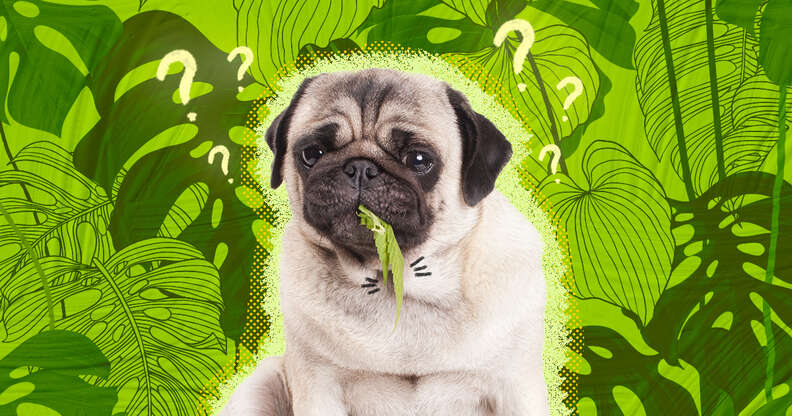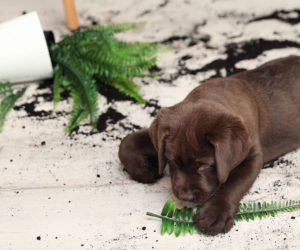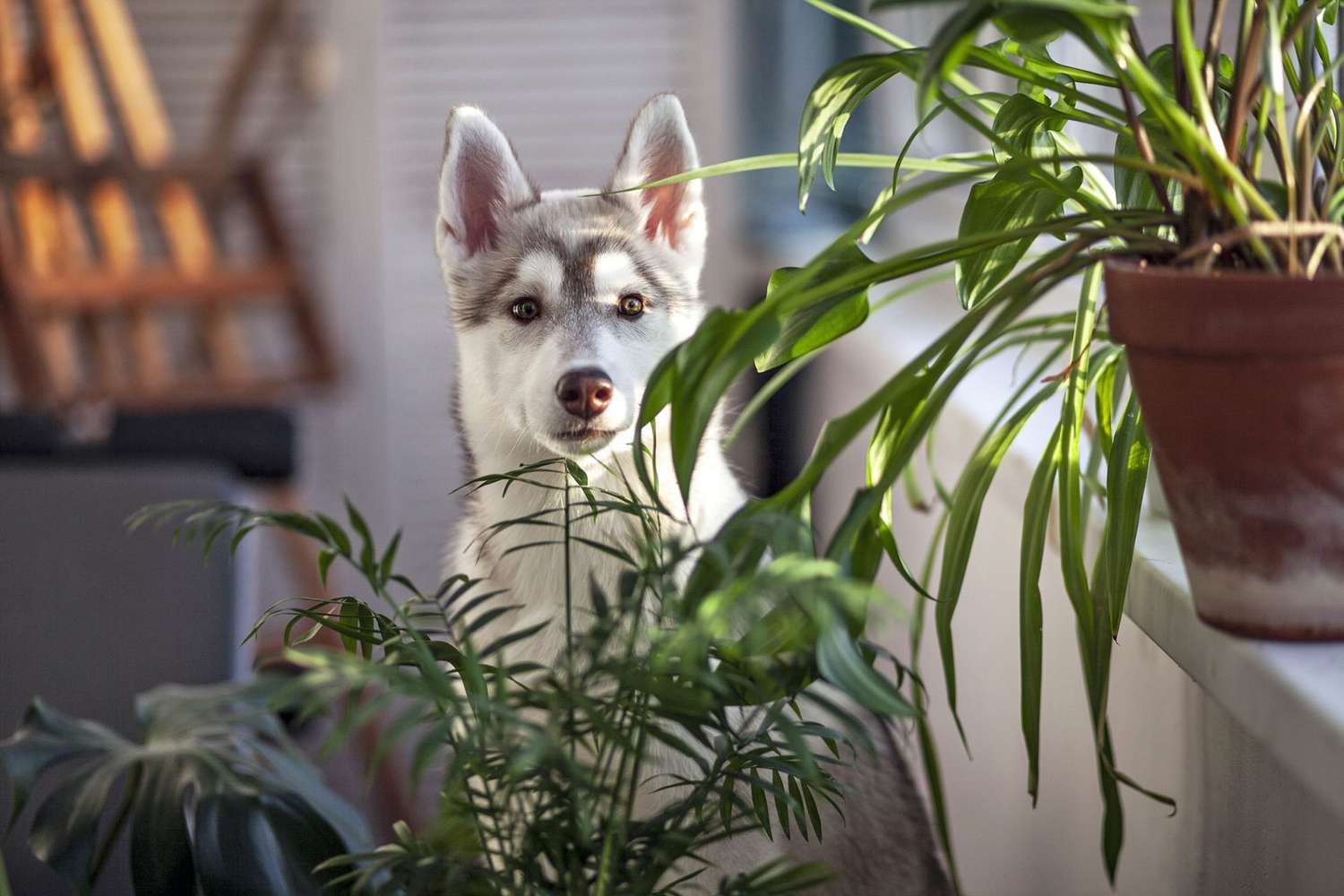If a dog eats a house plant, it may experience vomiting, diarrhea, or more severe symptoms depending on the plant’s toxicity. Immediate veterinary attention is recommended.
House plants can be dangerous for dogs. Many common house plants are toxic and can cause mild to severe health issues. Symptoms range from gastrointestinal distress to more severe reactions like organ failure, depending on the plant ingested. Pet owners need to be aware of which plants are safe and which are not.
Keeping toxic plants out of reach or opting for pet-safe alternatives can prevent accidental ingestion. Quick action and a visit to the vet can mitigate potential harm if your dog eats a house plant. Being proactive ensures your dog’s safety and well-being.

Credit: www.reddit.com
Common House Plants Toxic To Dogs
Many common house plants can be harmful to dogs. It’s crucial to know which plants are toxic. This helps you keep your furry friend safe at home.
Popular Toxic Plants
Several popular house plants are toxic to dogs. Here are some you should avoid:
- Aloe Vera: Causes vomiting and diarrhea.
- Philodendron: Can lead to mouth irritation and drooling.
- Sago Palm: Causes liver failure and is very dangerous.
- Oleander: Extremely toxic, can cause heart issues.
- Pothos: Leads to oral irritation and swelling.
Symptoms Of Poisoning
Knowing the symptoms of plant poisoning is crucial. Here are some common signs:
- Vomiting: Often the first sign of poisoning.
- Diarrhea: Can follow after vomiting.
- Drooling: Excessive saliva can be a sign.
- Weakness: Your dog may seem tired and weak.
- Loss of Appetite: They may refuse to eat.
| Plant Name | Symptoms |
|---|---|
| Aloe Vera | Vomiting, diarrhea |
| Philodendron | Mouth irritation, drooling |
| Sago Palm | Liver failure, vomiting |
| Oleander | Heart issues, vomiting |
| Pothos | Oral irritation, swelling |

Credit: www.thedodo.com
Immediate Steps To Take
If your dog eats a house plant, quick action is vital. Some plants can be toxic to dogs. Knowing immediate steps can help save your pet’s life.
Assessing The Situation
First, identify the plant your dog ate. Look for any missing leaves or stems. If you don’t know the plant, take a photo. This will help later.
Next, check your dog’s symptoms. Common signs of poisoning include:
- Vomiting
- Diarrhea
- Excessive drooling
- Tremors
Note any changes in behavior. Is your dog acting lethargic or anxious? These details are crucial.
Contacting A Veterinarian
Call your veterinarian immediately. Explain what happened and describe any symptoms. If you have the plant’s name, share it with them.
If your vet is unavailable, contact an emergency animal clinic. Many clinics offer 24/7 services. Time is of the essence.
In some cases, the vet may ask you to induce vomiting. Only do this if instructed. Use 3% hydrogen peroxide, one teaspoon per 10 pounds of your dog’s weight.
Keep your vet updated on your dog’s condition. Follow their advice for the best outcome.
Symptoms To Watch For
Dogs are curious creatures and often nibble on house plants. Some plants are harmless, but others can be toxic. It’s important to know the symptoms if your dog eats a house plant. This can help you take action quickly.
Gastrointestinal Signs
If your dog eats a toxic plant, the first signs often appear in the digestive system. Watch for these symptoms:
- Vomiting: This is a common sign of poisoning.
- Diarrhea: Loose stools can indicate a problem.
- Drooling: Excessive salivation is another red flag.
- Lack of appetite: Your dog may refuse to eat.
- Abdominal pain: Your dog may whine or show discomfort.
Neurological Symptoms
Some toxic plants affect the nervous system. Look for these neurological signs:
- Tremors: Your dog may shake uncontrollably.
- Seizures: Severe poisoning can lead to convulsions.
- Weakness: Your dog may have trouble standing.
- Disorientation: Your dog may seem confused.
- Coma: In extreme cases, your dog could lose consciousness.
If you see any of these symptoms, contact your vet immediately. Quick action can save your dog’s life.
Emergency Home Remedies
Dogs are curious creatures. Sometimes, they nibble on house plants. This can be dangerous. Some plants are toxic to dogs. If your dog eats a house plant, act fast. Here are some emergency home remedies.
Inducing Vomiting
Inducing vomiting can help remove toxins. First, check if the plant is toxic. If unsure, contact your vet. Do not induce vomiting if the plant is caustic. This can harm your dog’s throat.
To induce vomiting, use hydrogen peroxide 3%. Measure one teaspoon per 10 pounds of dog weight. Pour it into your dog’s mouth. Use a syringe if needed. Wait 10-15 minutes. If your dog doesn’t vomit, repeat once. Do not repeat more than once.
Activated Charcoal Use
Activated charcoal can absorb toxins. It prevents them from entering the bloodstream. You can buy it from pharmacies. Follow the dosage instructions on the package.
To administer, mix activated charcoal with water. Use a syringe to feed it to your dog. Give it every 4-6 hours for 24 hours. This can help reduce toxin absorption.
Always monitor your dog after these steps. Watch for signs of improvement or worsening. If symptoms persist, take your dog to the vet immediately.
Veterinary Treatments
When a dog eats a house plant, it can cause serious health issues. To treat these, veterinarians follow specific procedures to ensure the dog’s safety and recovery.
Diagnostic Procedures
Veterinarians first perform diagnostic procedures to determine the extent of poisoning. These procedures may include:
- Physical Examination: The vet checks the dog’s vital signs.
- Blood Tests: To identify any toxins in the bloodstream.
- Urine Analysis: To check for abnormal substances in urine.
- Imaging: X-rays or ultrasounds to see internal damage.
Common Treatments
Once the diagnosis is made, the vet decides on the treatment plan. Common treatments include:
- Induced Vomiting: To remove the plant material from the stomach.
- Activated Charcoal: Given to absorb toxins.
- IV Fluids: Helps to flush out toxins and prevent dehydration.
- Medications: To treat symptoms like nausea or seizures.
- Gastrointestinal Protectants: To protect the stomach lining.
In severe cases, the dog may need to stay at the vet’s office for further monitoring and treatment. The goal is always the dog’s health and safety.
Preventing Future Incidents
Keeping your dog safe from harmful house plants is crucial. Understanding prevention methods is the first step. This section covers everything from choosing safe plants to dog-proofing your home.
Safe Plant Choices
Not all plants are safe for dogs. Some can cause serious harm. Here are some pet-safe options:
- Spider Plant: Non-toxic and easy to care for.
- Areca Palm: A dog-friendly choice that adds greenery.
- Boston Fern: Safe for pets and looks great indoors.
- Hens and Chicks: A succulent that’s safe for dogs.
Avoid these toxic plants:
- Lilies: Extremely toxic and can cause kidney failure.
- Aloe Vera: Can lead to vomiting and diarrhea.
- Pothos: Causes irritation and swelling in the mouth.
- Philodendron: Can cause drooling and difficulty swallowing.
Dog-proofing Your Home
Dog-proofing your home is essential. Follow these tips to create a safer environment:
- Place plants out of reach. Use high shelves or hanging baskets.
- Train your dog to avoid plants. Use commands like “leave it” or “no.”
- Consider using bitter spray on plants. This discourages chewing.
- Use baby gates to block off areas with many plants.
- Supervise your dog in new environments. Watch for signs of curiosity.
Use a table to organize your dog-proofing checklist:
| Tip | Description |
|---|---|
| Place Plants Out of Reach | Use high shelves or hanging baskets. |
| Train Your Dog | Use commands like “leave it” or “no.” |
| Use Bitter Spray | Discourages chewing on plants. |
| Use Baby Gates | Block off areas with many plants. |
| Supervise Your Dog | Watch for signs of curiosity in new environments. |
When To Visit An Emergency Vet
If your dog eats a house plant, you may worry. Some plants can harm dogs. Knowing when to visit an emergency vet is crucial. Look for severe symptoms and non-responsive conditions.
Severe Symptoms
Watch for these severe symptoms in your dog:
- Vomiting
- Diarrhea
- Drooling
- Seizures
- Difficulty breathing
If your dog shows any of these symptoms, seek help. They might need immediate care. Early intervention can save lives.
Non-responsive Conditions
Some dogs might not respond to home care. Look for non-responsive conditions like:
- Continuous vomiting or diarrhea
- Not eating or drinking
- Weakness or lethargy
- Unusual behavior or aggression
These conditions may need emergency vet attention. Ignoring them can worsen the situation. Act fast to ensure your dog’s safety.

Credit: www.hartz.com
Long-term Health Monitoring
After your dog eats a house plant, it’s vital to monitor their health long-term. Some plants are toxic and can cause lasting issues. Keeping a close eye on your pet helps ensure they recover fully. Regular check-ups and observing signs of improvement are crucial steps.
Follow-up Appointments
It’s important to schedule follow-up appointments with your veterinarian. These visits help track your dog’s recovery progress. The vet may run tests to check for any hidden damage. Regular appointments also allow you to ask questions and get advice.
| Appointment | Purpose |
|---|---|
| First Check-Up | Initial assessment and treatment plan |
| Second Visit | Monitor recovery and adjust medications |
| Third Visit | Ensure full recovery and discuss preventive measures |
Signs Of Recovery
Watch for signs of recovery in your dog. These signs indicate they are healing well. Look for improvements in their energy levels and appetite. Check for normal bowel movements and reduced vomiting.
- Increased energy levels
- Normal appetite
- Healthy bowel movements
- Less vomiting
If you notice any new symptoms, contact your vet immediately. It’s essential to act quickly if your dog’s condition worsens.
Frequently Asked Questions
What To Do If Your Dog Eats A House Plant?
Contact your vet immediately. Identify the plant your dog ate. Monitor your dog for symptoms like vomiting or lethargy. Avoid inducing vomiting unless instructed. Keep toxic plants out of reach.
Are Indoor Plants Poisonous To Dogs?
Some indoor plants are poisonous to dogs. Common toxic plants include lilies, aloe vera, and philodendrons. Always check plant safety.
How Long Does It Take For A Dog To Show Signs Of Poisoning From A Plant?
Signs of plant poisoning in dogs can appear within minutes to hours. Symptoms include vomiting, drooling, and lethargy. Always consult a vet immediately if you suspect poisoning.
Why Is My Dog Eating My Indoor Plants?
Your dog may eat indoor plants due to boredom, curiosity, or nutritional deficiencies. Ensure they have enough toys and a balanced diet.
Conclusion
Preventing dogs from eating house plants is crucial for their health. Many plants are toxic to pets. Always keep plants out of reach. If ingestion occurs, contact your vet immediately. Educate yourself about pet-safe plants. Ensuring a safe environment for your dog can prevent unnecessary health issues and keep them happy and healthy.

My mission is to help you bring the beauty of nature indoors with expert advice, detailed plant care guides, and creative design ideas.





Leave a Reply